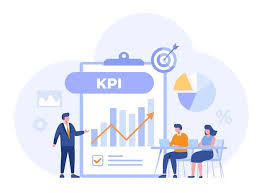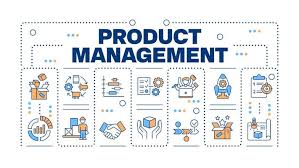Which deliverables and technical documentation should be prepared for technical due diligence?
Tech DD is a deep dive, meticulously scrutinizing an organization's tech infrastructure, software systems, intellectual property, and cybersecurity measures, among other critical factors. The cornerstone of a successful TDD isn't just the assessment itself, but the meticulously prepared and consistent technical documentation that underpins it. This isn't merely a formality; it's the bedrock that enables accurate, complete, and consistent evaluation, ensuring all stakeholders have the necessary information to make informed decisions. Neglecting this vital step is a glaring red flag that can lead to costly surprises, missed opportunities, and even a deal's failure.
The Unseen Powerhouse: Why Documentation Fuels Due Diligence Success
Why is TDD, and by extension, its documentation, so indispensable?
• Risk Mitigation: TDD unearths hidden technological risks, from cybersecurity vulnerabilities to outdated systems. Without proper documentation, these can become costly surprises post-transaction. For instance, a lack of documentation is a major red flag that questions the sustainability and scalability of technology.
• Value Assessment: It provides potential buyers and investors with a clear picture of the true value of a company's tech assets and their alignment with strategic goals.
• Integration Planning: An early understanding of the tech landscape facilitates smoother integration, significantly reducing disruption and costs during post-merger activities.
• Legal Compliance: TDD ensures the target company adheres to all relevant tech-related laws and regulations, such as GDPR or CCPA, helping to avoid severe financial and legal repercussions.
• Competitive Edge: In today's tech-driven market, robust tech capabilities and a clear strategic roadmap can be a key differentiator, boosting a company's attractiveness and potential for innovation.
Core Deliverables: What Investors and Acquirers Demand
For a truly thorough TDD, a broad spectrum of documentation is required. Here's a breakdown of the key categories:
Software and Systems
• Codebase Overview and Quality: Expect a detailed analysis of code quality, performance, and maintainability, including adherence to coding standards and reusability best practices. Crucially, technical debt must be quantified, as it directly impacts future development costs and timelines. Automated code review tools, like SonarQube, Veracode, or Fortify, are often employed for efficiency, though human expertise remains vital for complex logic.
• Software Architecture: This includes detailed architectural diagrams and descriptions outlining how various components interact, data flows, and deployment strategies. The assessment will identify bottlenecks, evaluate flexibility, scalability, and adherence to industry best practices, and review how architectural decisions are documented (e.g., Architectural Decision Records - ADRs).
• Third-Party Dependencies: A comprehensive catalog of all third-party libraries, services, and APIs is essential. This includes evaluating their licenses, longevity, and track record for security and updates to identify compliance concerns and integration feasibility. Tools generating a Software Bill of Materials (SBOM) are critical here.
• Development Processes: Documentation of methodologies (e.g., Agile, Scrum), testing strategies (unit, integration, end-to-end test coverage, automated regression tests, test plans), DevOps practices, and CI/CD pipelines. This also covers deployment and release processes, error logging, and resolution procedures.
IT Infrastructure
• Network Architecture & Cloud Strategy: Documentation must cover cloud services, hosting, network architecture, data backup strategies, and disaster recovery systems. The assessment evaluates robustness, reliability, scalability, redundancy, and cost optimization, identifying any single points of failure.
• Data Management & Security: Detailed information on data protection measures, access controls, encryption (at rest and in transit), vulnerability management, and incident response procedures is required. Compliance with data protection and privacy regulations such as GDPR, CCPA, and HIPAA is paramount, along with maintaining audit logs and analyzing data flows. Regular security audits are essential ongoing practices.
Intellectual Property (IP) & Legal
• Ownership and Protection: Documentation proving ownership of all essential intellectual property including patents, copyrights, trademarks, and business names is vital. This ensures no infringement on others' legal ownership.
• Licenses: Detailed reports on all third-party components, including free and open-source software licenses and commercial libraries, are required. This ensures compliance with licensing terms to avoid legal repercussions, expensive re-engineering, or product recalls.
Team Capabilities & Organizational Structure
• Organizational Chart: An up-to-date organizational chart detailing full-time employees, contractors, departments, roles, responsibilities, privileges, and associated costs. This helps identify talent gaps, succession planning, and potential over-reliance on key individuals.
• Key Personnel Interviews: Preparation for interviews with CTOs, CIOs, project managers, architects, developers, and business analysts to gain deeper insights into technology choices, challenges, and alignment with business goals.
Product and Technology Roadmap
• Strategic Vision: A clear product and technology roadmap that outlines the product vision, direction, priorities, and progress over time. It should align short-term efforts with long-term business goals, showcasing future functionality and technical milestones.
• Market Alignment: The roadmap should demonstrate responsiveness to customer feedback, market insights, and competitive landscape shifts.
Financial & Operational Data (from a Technical Lens)
• Cost Analysis: Reviews of costs and expenses incurred to service the business, including budgets versus actual spending, capital expenditure (Cap-Ex) versus operating expenses (Op-Ex), software license agreements, and human resource costs. This helps identify and eliminate inefficiencies.
• Performance Metrics: Documentation of system availability statistics, key performance indicators (KPIs) like response times for support requests, and turnaround times for critical bug fixes or security concerns.
Beyond the Checklist: Ensuring Quality and Compliance
The sheer volume of documentation required for TDD can be daunting, but it's the quality and accuracy that truly matter. The technical document review process is designed to ensure that these documents are accurate, complete, and consistent, effectively communicating the necessary information to their audience.
This review typically involves several stages:
• Self-Review: The author's initial check for clarity, typos, grammar, and style.
• Peer/Editorial Review: Evaluation by colleagues or subject matter experts for accuracy, completeness, and adherence to standards and style guides.
• Technical Review: Focused on clarity, organization, consistency, and logical information flow.
• Compliance Review: A final check to ensure adherence to applicable regulations, standards, and guidelines before publication or distribution.
Key aspects to scrutinize during review include: content accuracy and relevance, consistent formatting, logical structure, clear and concise language appropriate for the audience, compliance with regulations, and updated references. Using checklists and automated tools significantly streamlines this process, boosting efficiency and minimizing errors. Furthermore, a commitment to ongoing vigilance and continuous monitoring of systems and security measures is crucial, not just a one-off event.
In the modern business world, technical due diligence is far more than an option; it's a strategic necessity. By diligently preparing comprehensive technical documentation and subjecting it to rigorous review, organizations can mitigate risks, identify opportunities, and optimize investments. This proactive approach ensures that your technological assets align seamlessly with strategic goals, laying a solid foundation for future success and unlocking new levels of value in every business endeavor.



















